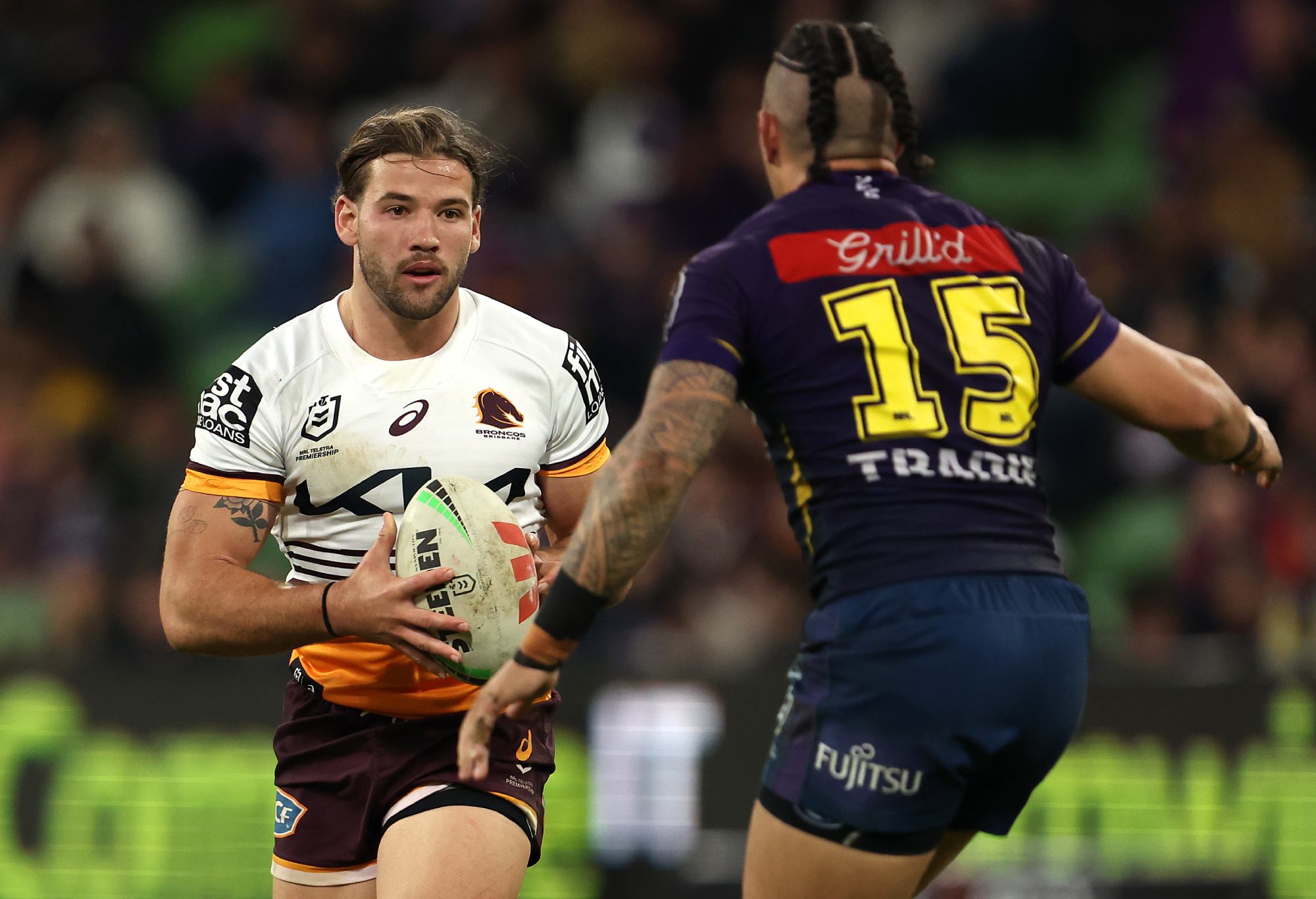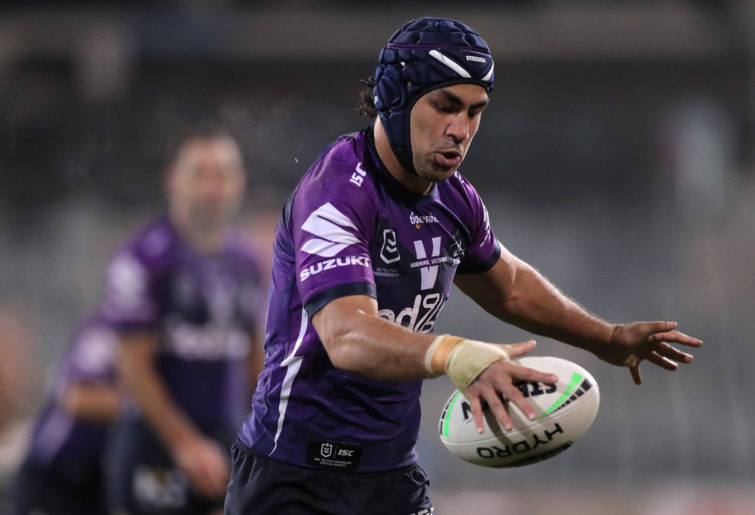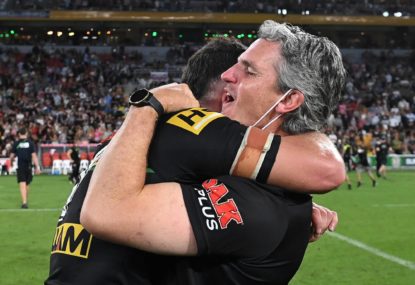At the end of the home-and-away season, the top eight ranked NRL teams play off in the NRL Finals series to determine the NRL Premiers of the year.
These four weeks of football cut the top eight teams down to two in time for the grand final in the fourth and final week, which is normally played at the Sydney Olympic Stadium (currently known as ANZ Stadium) at Homebush.
Here’s a full explanation of how the NRL finals format works.’
How is the top eight decided?
The top eight teams in the NRL are decided based on ladder position. During the regular season, which consists of 24 games, each victory is worth two points, while a draw is worth one and teams get zero for a draw.
In the case of tied teams, for and against, which is a subtraction total points against from total points for, is used to split teams.
Where are the NRL finals played?
As mentioned, the NRL grand final is normally played at Homebush, or Stadium Australia.
Before that, they are played on a state-based home and away rotation. Teams from outside of Sydney, including the Brisbane Broncos, North Queensland Cowboys, Gold Coast Titans, Canberra Raiders, Newcastle Knights, New Zealand Warriors and Melbourne Storm are allowed to play their games at home across the first three weeks.
The other Sydney-based teams – the Sydney Roosters, South Sydney Rabbitohs, Canterbury Bulldogs, Manly Sea Eagles, Cronulla Sharks, St George Illawarra Dragons, Penrith Panthers, Parramatta Eels and Wests Tigers – are forced to play their games at either Homebush or the Sydney Football Stadium to ensure fans aren’t locked out of games by smaller capacities.
pen

Patrick Carrigan. (Photo by Robert Cianflone/Getty Images)
What happens if a game is drawn?
If a game is drawn, extra time will be played to ensure a winner is found. Unlike the regular season, finals games can’t be drawn no matter what.
At the conclusion of the game, there will be a short break and new coin toss, with two five-minute halves to then be played.
Unlike the regular season, this is not golden point, but rather, the full ten minutes must be played to ensure there is even opportunity for teams to hit the front.
If scores are still tied at the end of the ten minutes, it will then become golden point with the teams playing until a winner is found.
The longest game in recent memory was played in 2010, when the Roosters beat the Tigers in the 101st minute of action.
The only known game at the top level to last longer was the 1997 tri-series final between New South Wales and Queensland during the Super League war, which ran for 104 minutes.
The first week
The eight teams are divided into two groups of four, the top four (1-4) and the bottom four (5-8), who play games among themselves in the first week of finals.
In the top four, first play fourth and second play third in qualifying finals. The higher-placed teams, first and second, have the right to host these finals in their home state.
One of the advantages given to teams in the top four is that they cannot be eliminated if they lose in the first week.
However, the winners of these finals have a bye in the second week and host a preliminary final in their home state in the third week.
Meanwhile, the losers of these finals must play again in the second week and, if they survive that, may have to travel interstate to play their opponent in the third week. So winning a qualifying final is a significant advantage.
First Qualifying Final: first ranked team hosts fourth ranked team
Second Qualifying Final: second ranked team hosts third ranked team
In the bottom four, fifth play eighth and sixth play seventh in elimination finals. Again, the higher-placed teams, fifth and sixth, have the right to host these finals in their home state.
As the name suggests, the loser of these finals will be eliminated from the finals series. The winners go on to play the losers of the qualifying finals in semi-finals in the second week.
First Elimination Final: fifth ranked team hosts eighth ranked team
Second Elimination Final: sixth ranked team hosts seventh ranked team
These four games are played across four timeslots: Friday night, Saturday afternoon, Saturday night, and Sunday afternoon.
The second week
In the second week of the finals series two semi-finals are played between the two teams that lost the qualifying finals and the two teams that won the elimination finals.
The teams that won the qualifying finals have a week off, while the teams that lost the elimination finals are out of the running.
The teams that lose these semi-finals will also be eliminated, while the teams that win will go through to face the qualifying final winners in preliminary finals in week three.
The finals series is organised so that the loser of first versus fourth will play the winner of fifth versus eighth, and the loser of second versus third will play the winner of sixth versus seventh.
The losing qualifying final teams are given the right to host these matches in their home state. These games are played across two time-slots: Friday night and Saturday night.
First Semi-final: loser of First Qualifying Final hosts winner of First Elimination Final
Second Semi-final: loser of Second Qualifying Final hosts winner of Second Elimination Final

(Photo by Matt King/Getty Images)
The third week
In the third week the winners of the qualifying finals from the first week play the winners of the semi-finals from the second weeks in preliminary finals.
These preliminary finals determine who enters the grand final. The teams who win preliminary finals are through to the grand final, the teams who lose them are eliminated from the finals series.
There are a wide variety of potential preliminary final combinations available depending on how the first two weeks of the finals series pan out.
The winner of the first qualifying final plays the winner of the second semi-final, and the winner of the second qualifying final plays the winner of the first semi-final. This guarantees that it is not possible for any two teams to meet twice in the first three weeks of finals.
The qualifying final winners not only have had a week off as a bye, but also get to host these games in their home state, giving them a significant advantage. These games are played across two time-slots: Friday night and Saturday night.
First Preliminary Final: winner of First Qualifying Final hosts winner of Second Semi-Final
Second Preliminary Final: winner of Second Qualifying Final hosts winner of First Semi-Final

Nathan Cleary. (Photo by Jason McCawley/Getty Images)
The fourth week
In the fourth week of finals, the two teams that won the preliminary finals play each other in the grand final. The winner of this match is declared the year’s premiership team.
The grand final could theoretically be between any two teams in the finals series, except for those that play elimination finals against each other in the first week and cannot possibly both progress.
Although one team will be listed first as the ‘home’ team, this fixture does not change venue regardless of the home state of the teams involved.
It has been played every year at ANZ Stadium since it was constructed in 1999, except for 2021 when it was played in Brisbane due to the COVID-19 pandemic.
The grad final is currently played on a Sunday evening timeslot.
Grand Final: winner of First Preliminary Final meets winner of Second Preliminary Final
































































































